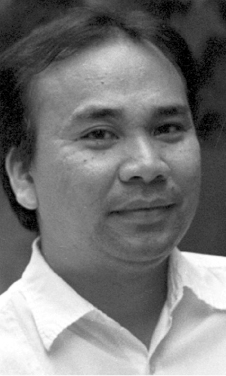
Jobers Bersales
Congratulations to Cebu Daily News on its 20th anniversary!
* * *
Let me thank Mayor Luigi Quisumbing for finally answering my prayers. For a couple or more columns over the past three years or so, I have been calling for a way to stop vehicles from turning left to the McDonalds drive thru about 10 meters from the intersection of A.S. Fortuna and Hernan Cortes — a very flagrant violation of traffic rules that snarl traffic for cars coming from and going to Banilad. Ditto that barbecue restaurant beside it, where idiots often park on the outer lane just to satiate their hunger with nary a regard for traffic rules.
Last week, traffic cones spaced close to each other and neatly tied together were finally installed, thus ensuring smooth traffic and preventing these greedy and unscrupulous motorists from getting away with the law. I noticed also that about three weeks ago, traffic cones were also installed at the Guizo/Maguikay flyover, which also resulted in ending these stupid drivers swerving into the flyover from another lane and cutting others off.
I salute you, sir, for your political will. May your tribe increase! Ditto the radical but most welcome decision of Mayor Tomas Osmeña to impound for one month those vehicles that counterflow.
I know some will say these are but small and easy things to do but that is where all things begin, from small steps.
In the same vein, however, let me express here my vehement opposition at the plan to construct a multi-level flyover and close off Quezon Avenue in Mandaue for a good three years as a result. We need a mass transit system indeed, but I do not agree that flyovers can ease traffic. They are just palliatives, transferring the traffic congestion elsewhere. What we need is a traffic decongestion master plan before anything else, not unplanned, knee-jerk, usual solutions by people from Manila.
More of this in my future columns.
* * *
In last week’s column, I discussed how the private sector can find novel ways to help beleaguered owners of heritage houses who have no recourse but to sell their properties due to financial difficulties. I’m glad I was in Vigan City, the UNESCO World Heritage Site which has preserved a large part of its Spanish-colonial character complete with streets and two-storey shop houses. The visit, on the invitation of National Archives of the Philippines (NAP) executive director Ino Manalo, gave me time to think about what we in Cebu had lost (due largely to war) and what ought to be done to preserve what we have left.
Republic Act 1006, the National Cultural Heritage Law is very clear that structures 50 years and above are automatically protected from destruction and damage. There are nuances, however, in that one cannot just protect any and all structures that are 50 years old. The most important thing to consider is that the structure or property has to have historical, archaeological, artistic, or architectural (including indigenous, native of vernacular) value or significance. Take note only one of these is enough to protect the structure from destruction. And there are many possible levels of significance: from the community level on which the structure is found up to the national and even international.
A house where a town mayor or some important writer or painter or someone important to the town or city lived at one time is of significance to that city. It is protected automatically by R.A. 10066. Whoever seeks to sell the property therefore has to inform the cultural agencies — in this example it would be the NHCP as it deals with historical properties — for permission to sell or transfer or whatever you want to do with the house that will affect its significance. If the owner fails to do this, then any citizen can send a letter of complaint to the NHCP which should then send a person to inspect the property in question and request the courts to impose a cease-and-desist order pending inquiry to determine if the law is violated. This then becomes a legal battle in which, as it progresses in the courts, nothing should be done to the house.
If the house has been dismantled without the express permission of the NHCP, then the owner may be held liable, assuming a case if filed against him or her. The courts will be left to determine culpability. I assume that the NHCP will file the case and hire a lawyer or lawyers as they have done so in the past, especially for cases affecting historical structures of national significance.
To avoid such difficulties, therefore, local government units should now hold meetings to inform en masse, all the owners of houses and other structures that are 50 years old and over about the law (RA 10066) and to help determine which of these are of significance or value to the city/town, province, region and nation. This is part of every cultural mapping exercise that should be done with the owners (the immediate stakeholders) as active enumerators and participants and not just passive respondents to questions. You see, problems erupt later when outsiders conduct cultural mapping and are the ones who then determine a structure’s significance. You will certainly have owners who will disagree with what these outsiders decide upon on the basis of a short-term visit and a brief question-and-answer exercise.
I would recommend a lawyer like Atty. Kay Malilong, for example, to be a resource person at an LGU in a meeting with such owners. Kay can explain their rights vis-à-vis R.A. 10066 so that these owners are better informed.
Disclaimer: The comments uploaded on this site do not necessarily represent or reflect the views of management and owner of Cebudailynews. We reserve the right to exclude comments that we deem to be inconsistent with our editorial standards.
